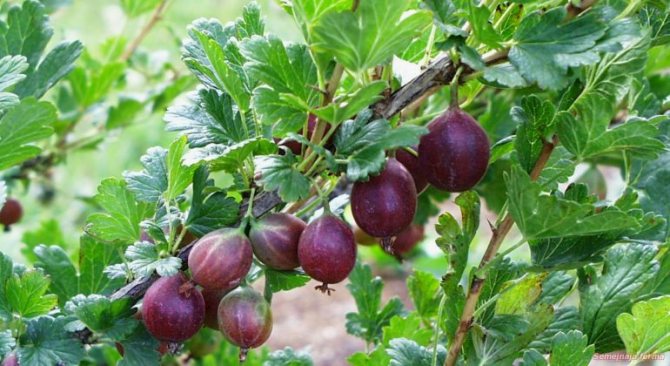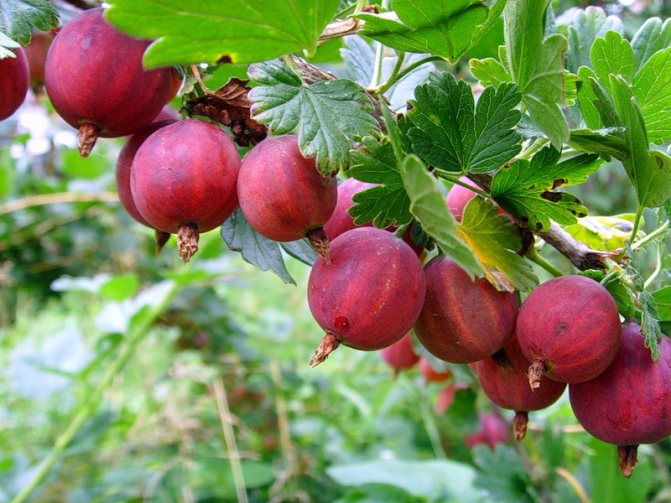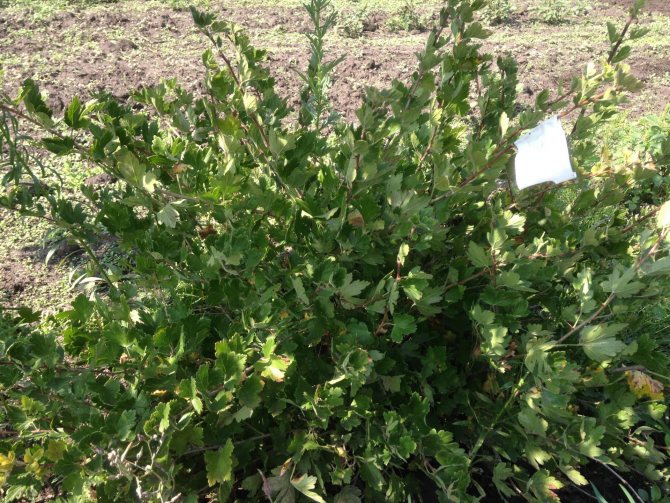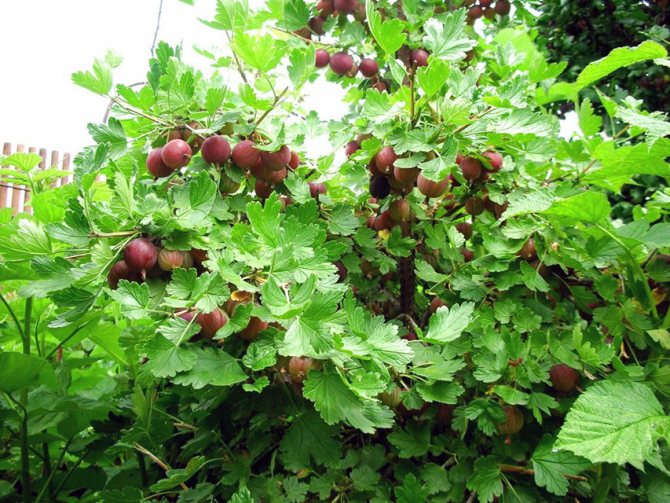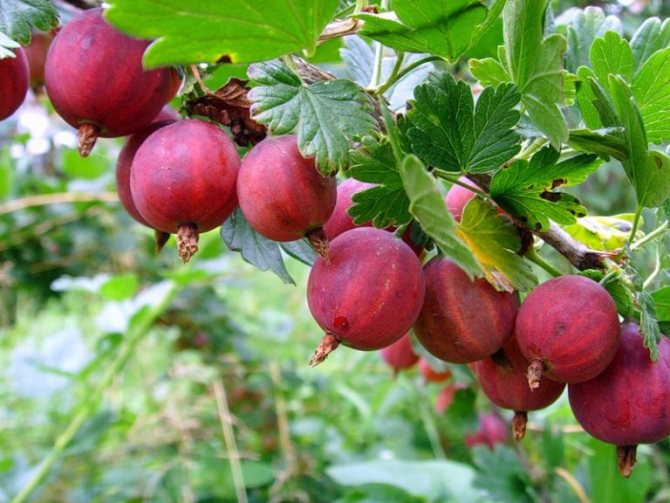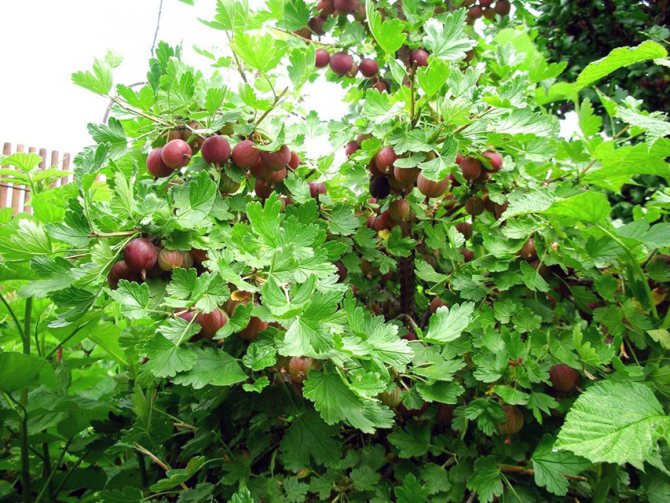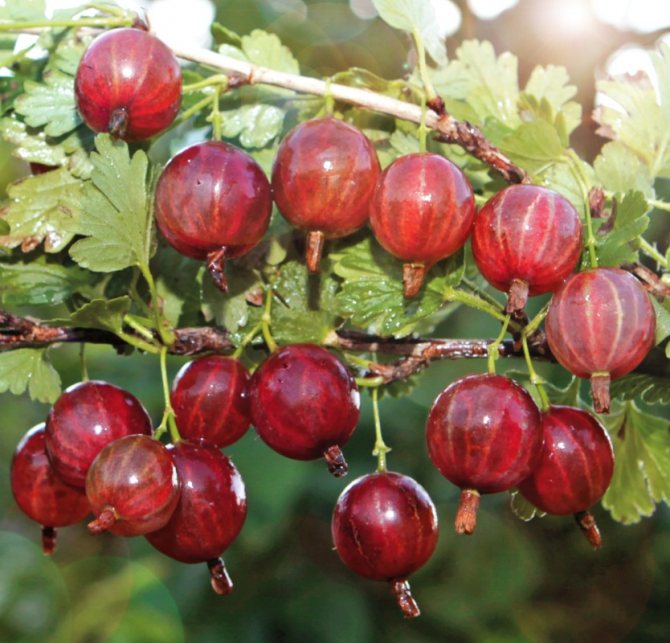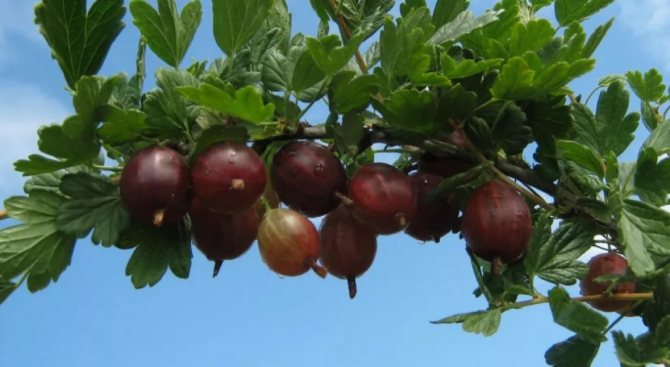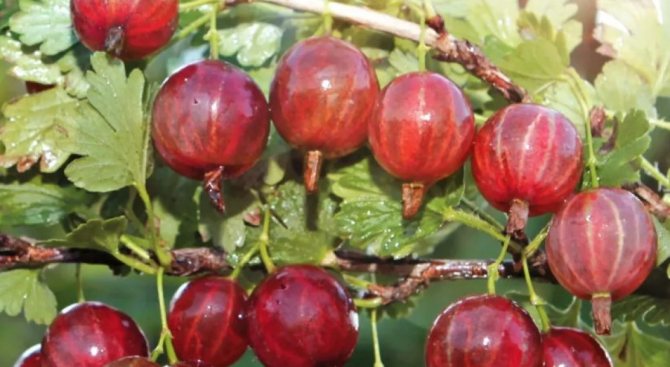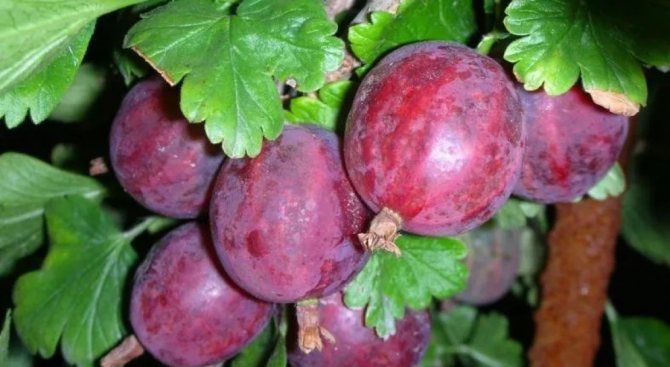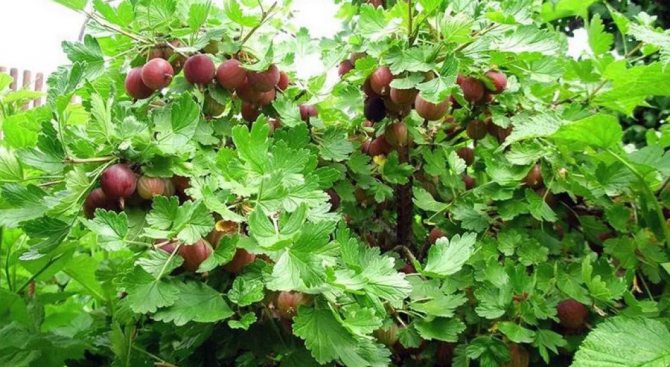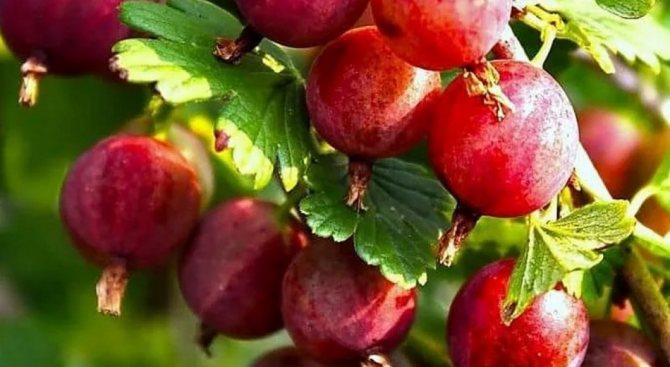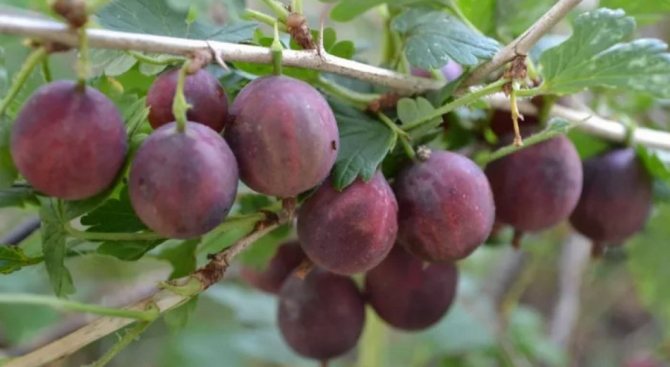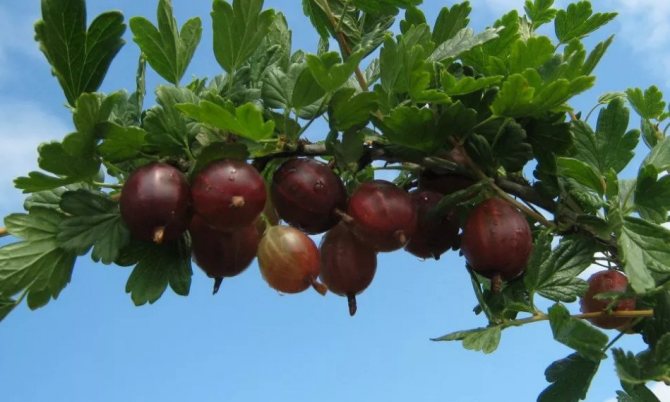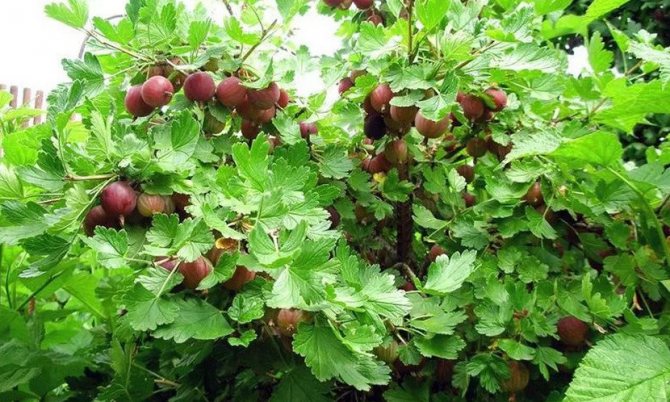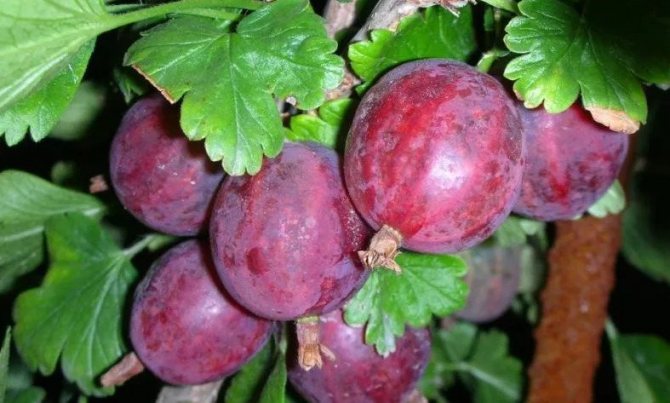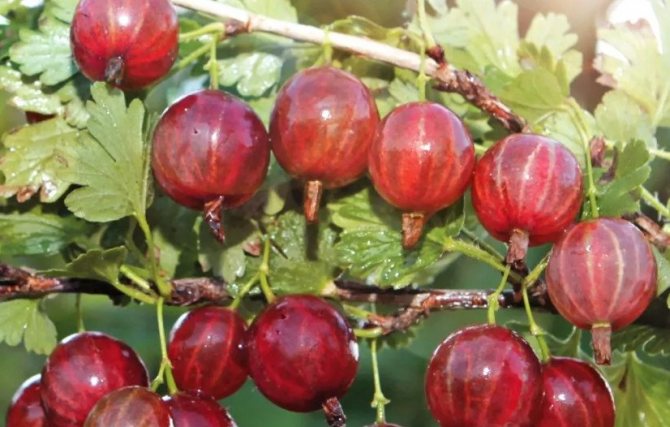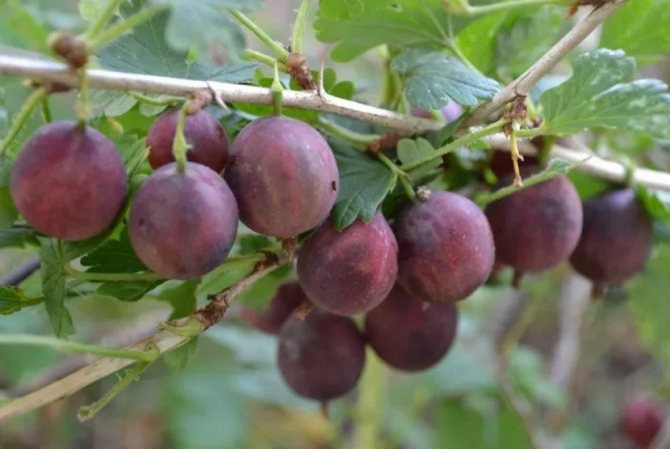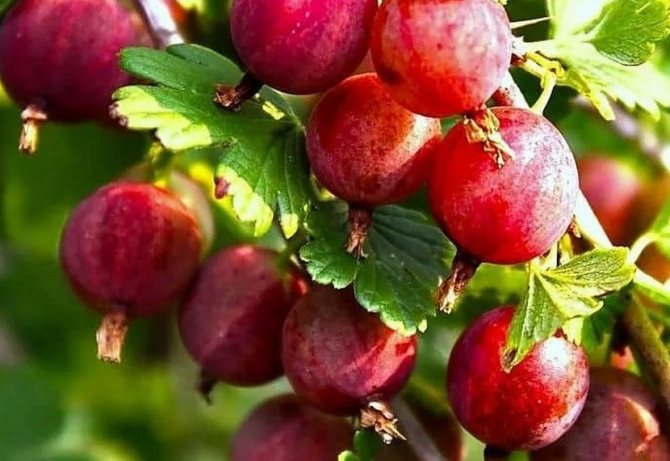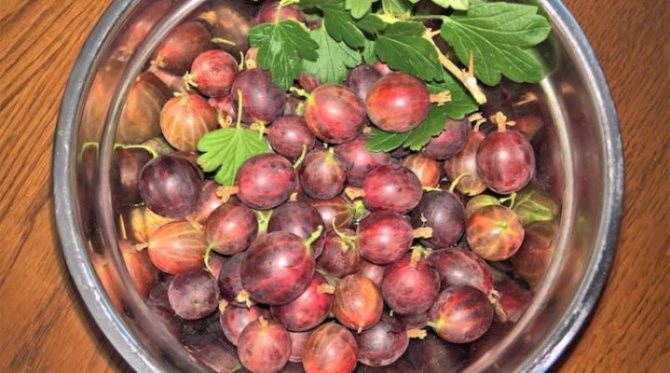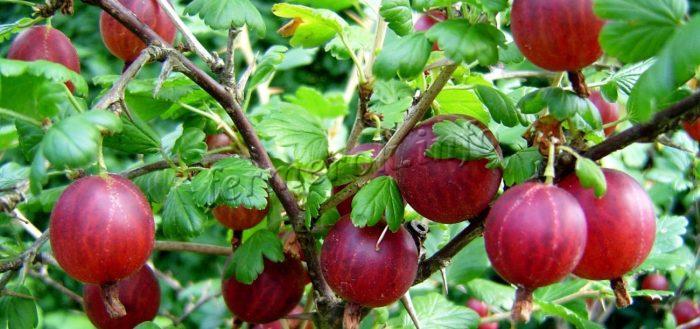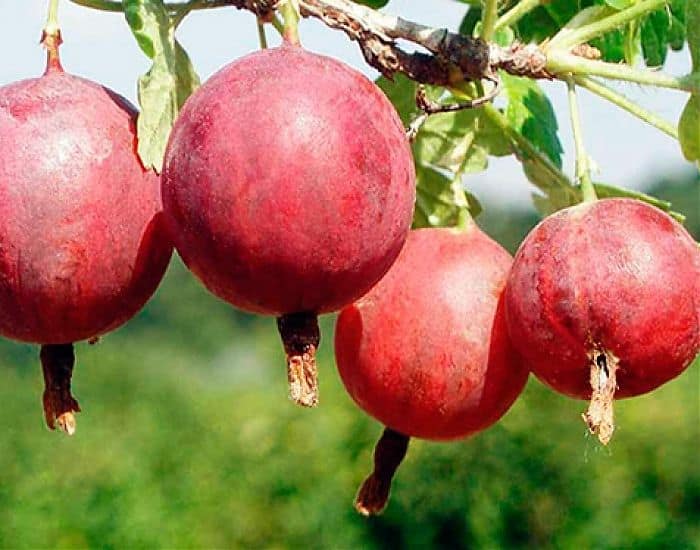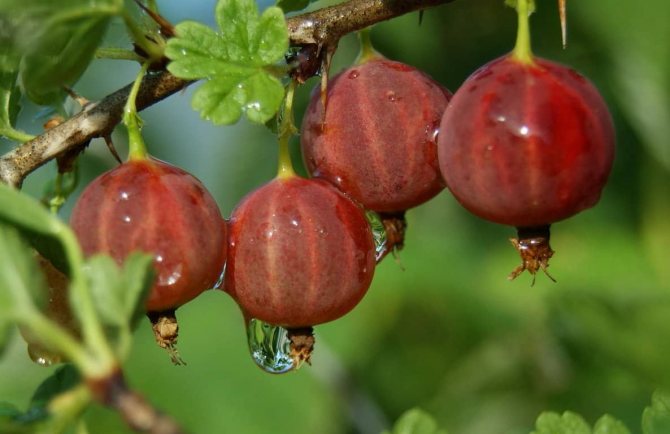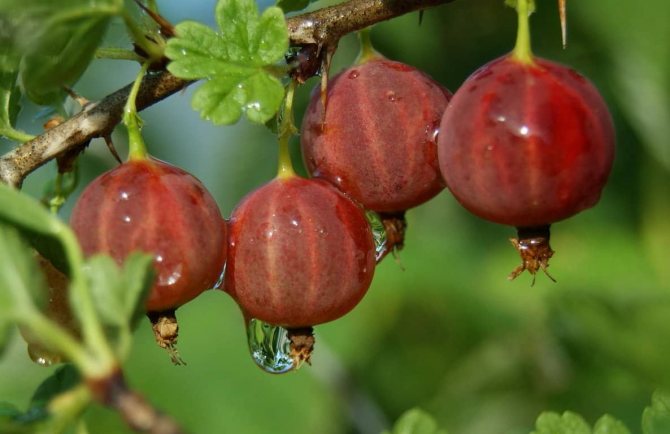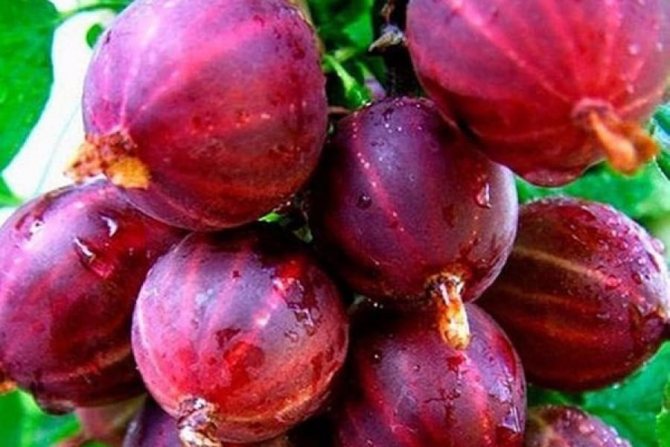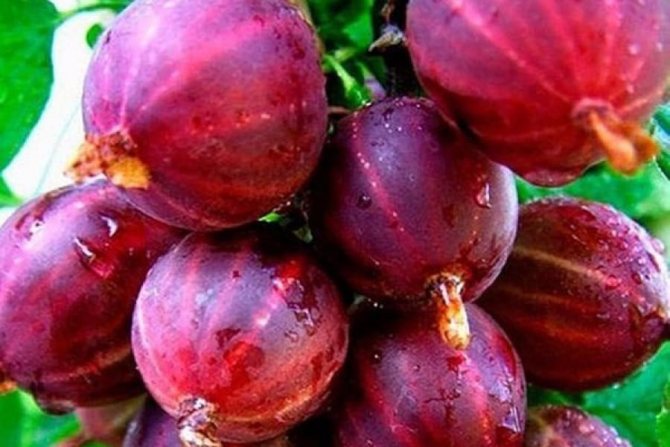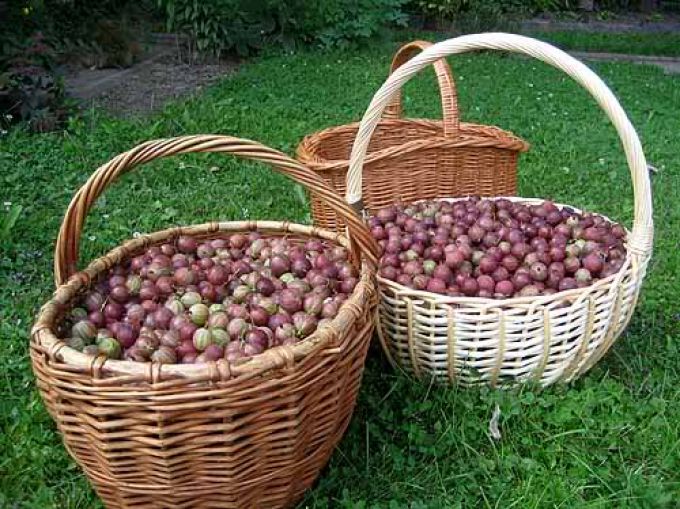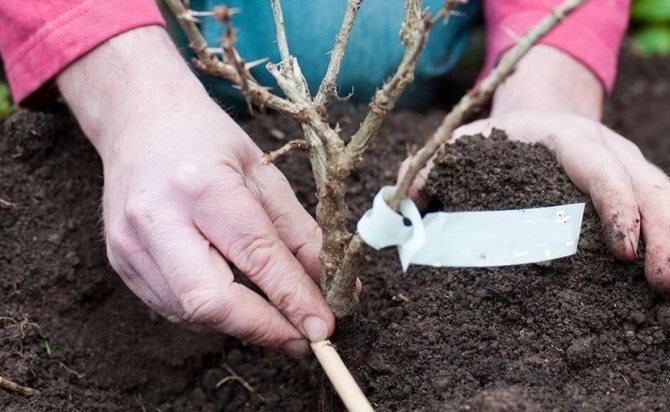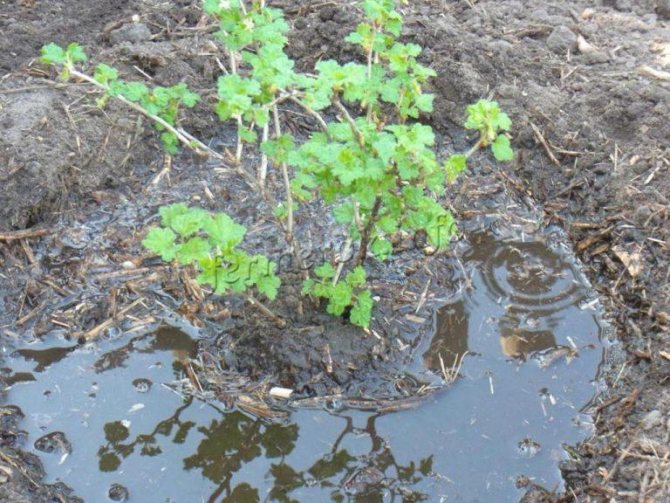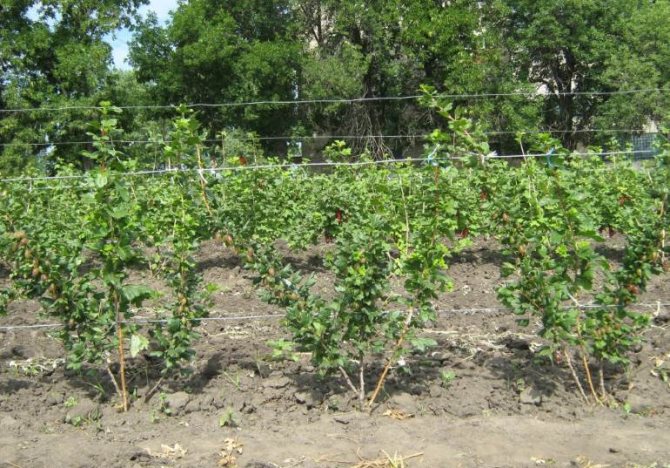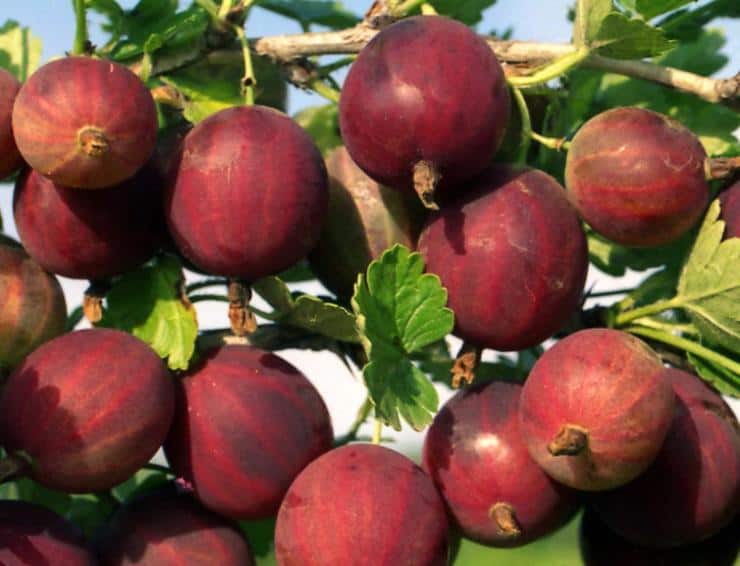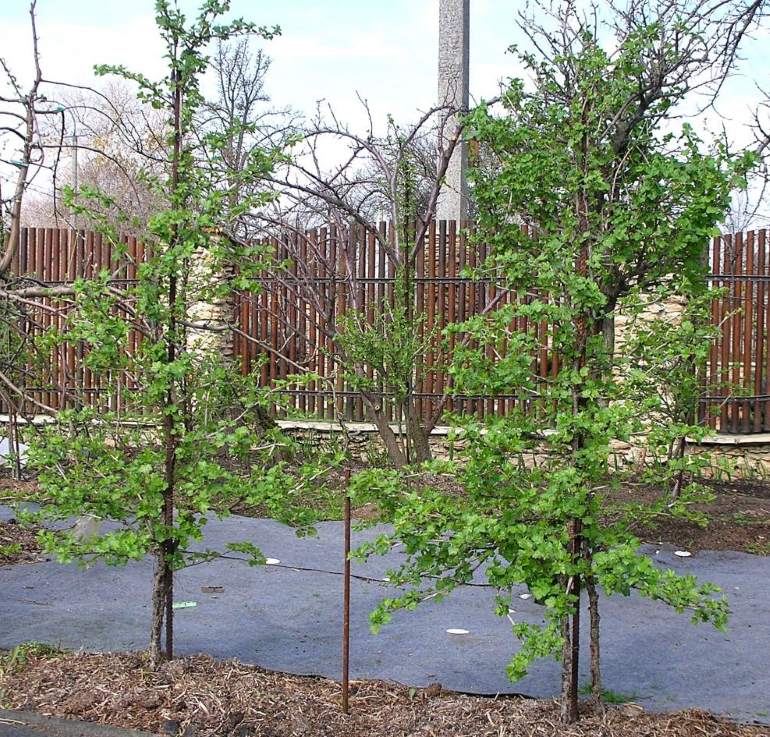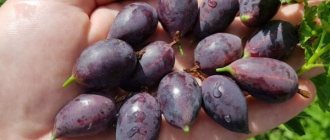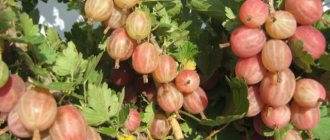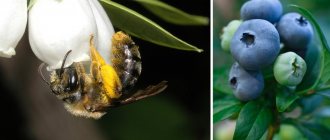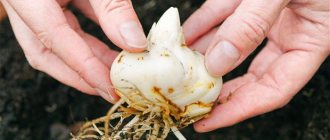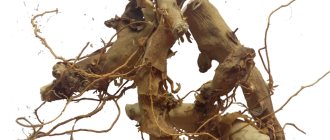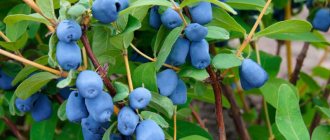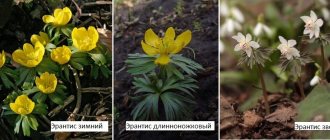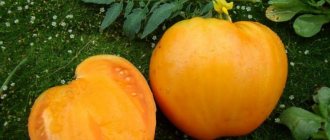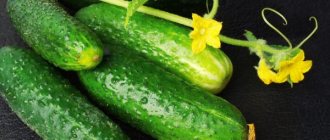Breeding history
The Russian variety was bred at the All-Russian Institute of Selection and Technology for Horticulture and Nursery in the late 1980s in the USSR when crossing the Smena and Pink-2 species. He almost immediately received his description, was entered in the State Register of Plant Varieties and began to spread throughout the territory of the Russian Federation. The species is zoned for the Central, Central Black Earth, Volgo-Vyatka and East Siberian regions of the country.
Did you know? Kiwi is a relative of the gooseberry. The fruits of this plant are called "monkey peach", "Chinese gooseberry", "Chinese actinidia".
Feature, description
Powerful mid-early maturing plant yields by mid-JulyI. Sprawling strong bushes give a lot of medium and large berries - up to 5-7 grams. Rounded or slightly elongated fruits, with proper care, can grow to a mass of 8 grams. The dark red color of ripe berries looks great on the bush and demonstrates ripeness and richness.
The pleasant aroma and sweet-sour taste of the berries are an excellent characteristic for the variety. The sugar content is up to 8.7%, and the vitamin C content is not less than 25 mg per 100 g of the crop. The bush is practically studless, and the berries are transportable and lay... The foliage is powerful, the crop's tendency to thicken is high.
Information on the benefits of gooseberry
Scientists have determined that it is in this variety that many useful substances are available, so it is not surprising that many doctors recommend using Kolobok berries as an additional treatment for various diseases. This is due to the presence of healthy sugars and vitamins in gooseberries.
It is noted that the use of Kolobok helps restoration of immunity after suffering infectious pathologies... It is recommended to eat berries to prevent colds due to the presence of vitamin C and ascorbic acid in them. Gooseberry helps prevent anemia, arterial hypertension, and strengthen the walls of blood vessels.
Pros and cons
The qualities of this remontant plant are high and are used by farmers to obtain a good harvest.
Also learn how to properly care for gooseberries in the spring.
Drought resistance, frost resistance
Given that the berries have succulent properties, gooseberries are able to withstand both a dry period and severe frosts. The absence of rain or artificial watering, of course, is difficult for the plant to survive, but these are not critical conditions for its life. Short-term frosts also do not greatly affect the bushes - they do not freeze and calmly survive sub-zero temperatures.
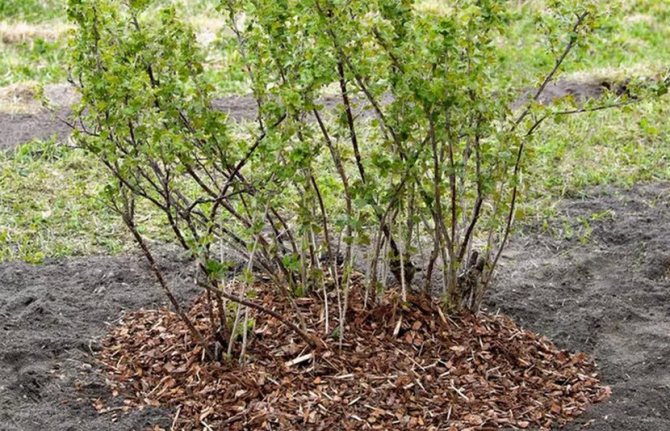
In order for the crop to withstand frost, you can mulch the root layer with straw, sawdust or cut weeds.
Productivity and fruiting
You can harvest this variety within a month - the formation of berries takes a long time. The gooseberry brushes fall almost to the ground - large berries bend the branches with their mass. With proper care, the yield can be up to 10 kg per bush.
Landing
The Kolobok gooseberry is planted on warm autumn days, so that the bush has time to take root and adapt to the soil of the site.
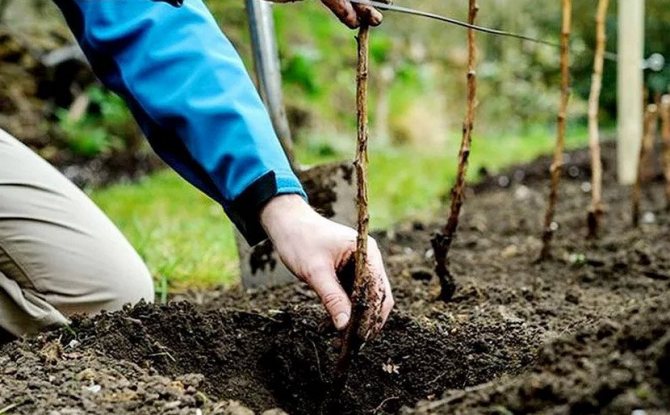

Timing
The best time to disembark is mid-October. At this time, the night frosts are not so strong and the soil did not have time to freeze. Therefore, the seedlings will quickly get used to the soil, changes in temperature and will normally prepare for winter.
Learn more about how to deal with lichen and moss on gooseberries.
Choosing the right place
For planting gooseberries, a place lit with natural light is chosen where there are no drafts.... It is advisable not to plant bushes near the fence so that it does not shield the heat. On the hills, planting berry bushes is also not worth it - the soil may not be wet enough and the plants will not receive their portion of moisture.


Selection and preparation of planting material
Growing seedlings or buying them requires a high-quality selection of material for future plantings. You can plant a small area with a couple of dozen scraps, then choose the strongest of them and plant in permanent places of growth. Another cultivation scenario involves the purchase of bushes with their subsequent planting.
Important! It is also not necessary to plant a crop in dry places, because for all the thorniness of the gooseberry, it is a berry that loves moisture.
In any case, it is necessary to adhere to some rules so that the plant can take root:
- a medium-sized bush with even small roots is selected;
- the shape of the plant must be proportional;
- the appearance of the gooseberry must be healthy;
- the trunk and foliage are mature and healthy.
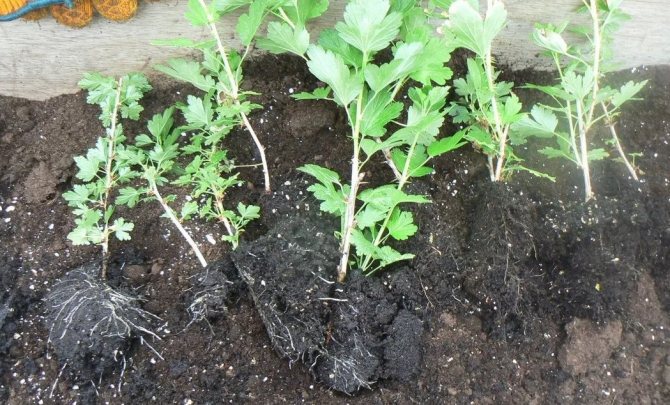

Landing scheme
It is necessary to plant the selected bushes in a checkerboard pattern at a distance of 1x1 m from each other. This is done taking into account the fact that gooseberries form a fairly large bush and can interfere with their neighbor's growth and development.
In addition to the distance when planting, it is necessary to take into account the fact that the plant seriously drains the soil. To prevent this from happening, a small trench is made in the root zone, where moisture is retained after watering.
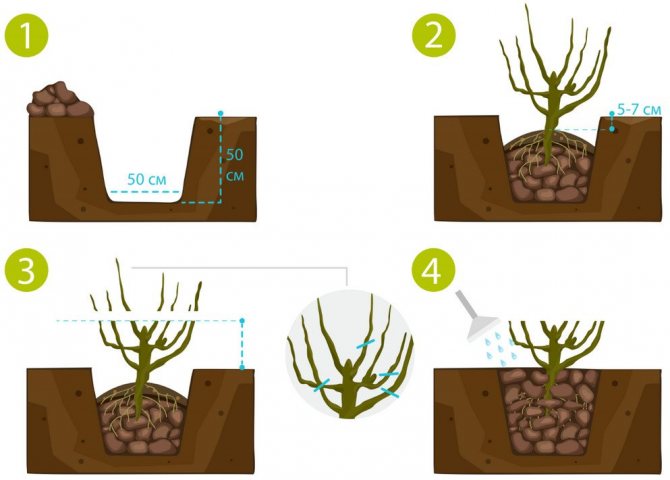

Choosing a place on the site
In order for the gingerbread gooseberry to bear fruit well, you need to plant a stalk in a suitable place. The main requirements are sufficient illumination, soil composition and a moderate distance from groundwater.
The best playground for Kolobok
Gooseberries can be planted where legumes, potatoes or beets were previously grown. But on the site where raspberries or currants were previously located, the Kolobok should not be planted.
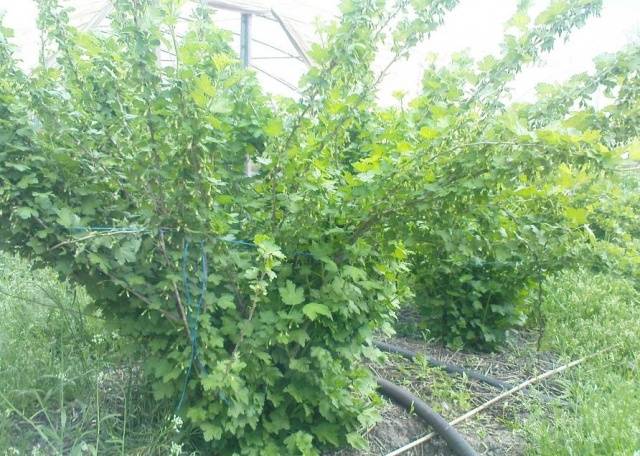

Important! The ideal place for planting shrubs is a spacious, well-lit area.
The best place for gooseberries is a free, well-lit area. If there is no such zone for a seedling in the garden, a place in partial shade is suitable.
Soil moisture
The second important factor is the proximity of groundwater. Although the gooseberry gingerbread man requires regular watering, excess moisture can provoke fungal diseases in the plant. If the groundwater is less than two meters deep, an embankment will need to be prepared before planting the bush.
Soil composition
There are a number of requirements for the composition of the soil. In order for the gooseberry Kolobok to bear fruit well, the land must be:
- neutral / slightly acidic;
- loose;
- fertilized.
After planting the plant, the moisture content of the soil should be monitored. When it rains periodically, this will be enough for the growth of the shrub. If the summer is dry, the gooseberries will have to be watered.
Features of seasonal care
Taking into account the dimensions of the fruits and the size of the green mass of the bushes of the variety, caring for the plant consists in timely tying, installing supports and pruning thickening branches.
Video: Gooseberry Care
Soil care
As mentioned above, the soil should be irrigated, but not soggy - the roots do not need to be kept in constant moisture.Soft soil is best for this fairly tough plant. Breathing black soil or light loam will be normally perceived by Kolobok.
After the near-stem layer of the earth has dried, it must be carefully loosened up. The day after the rain, this operation must also be done.
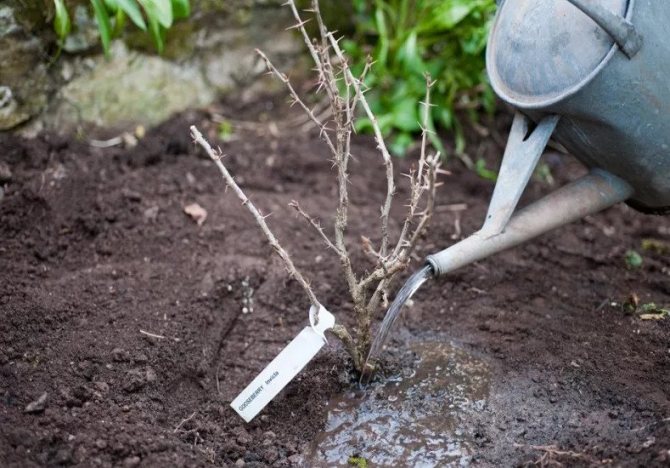

You need to water the bushes 1-2 times a week.
Preventive treatment
With all the resistance to pests, it is better to treat the shrub for preventive purposes. Two types of prophylaxis are possible - with soapy water (branches and foliage are washed) or with special chemicals (all aerial parts of the plant are sprayed). Commonly used Actellic, Lepidocide, Bordeaux liquid or similar means. Processing is carried out in the spring before flowering.
Top dressing
When planting a plant, fertilizers are laid in the pit. If this was done, then within three years the gooseberry bush does not need feeding.
Important! In order not to burn the roots of the bush with chemicals, it is necessary to dissolve all the components of the dressing in advance in water.
In the third year, Kolobok needs to be stimulated - once a year, the following composition is introduced:
- compost - 1/2 bucket;
- superphosphate - 50 g;
- ammonium sulfate - 25 g;
- potassium sulfate - 25 g.
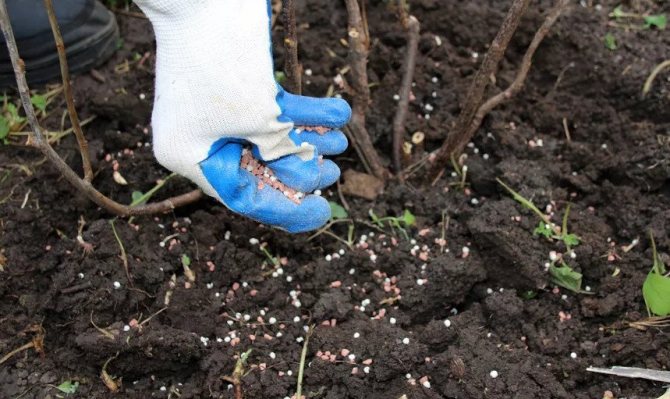

Support
Depending on the size of the plantation, you can use improvised structures, stretch marks or specially prepared trellises. Branches with emerging berries are tied to pre-installed structures. In this case, care must be taken not to damage the branches or lashes with fruits.
It is advisable to tie it up at several levels - two or three, in order to reduce the mass load on the parts of the plant. Considering the size and power of the Kolobok gooseberry bush, it is obvious that this variety requires a garter during fruiting.
Harvesting and storage
Collecting this variety is quite simple - the absence of thorns and the large size of the berries contribute to their normal removal from the branches. With all the density of gooseberry fruits, you should not put the berries in more than 3-4 layers. Plastic containers with breathable lids are best. You can store the Gingerbread Man for 2-3 weeks in the refrigerator or basement. And it is better to process the berries for longer storage - into juice, compote, jam.
Preparing for winter
In October, branches that are more than 5 years old are cut, leaving only 4-5 powerful skeletal shoots with well-developed stems. You should not apply nitrogen-containing fertilizers during this period. To increase winter hardiness, gooseberries are fed with mixtures based on potassium and phosphorus.
The trunk circle is mulched with rotted manure. The thickness of the layer should be at least 10 cm. For the winter, all branches are tied, pressed to the ground with boards and the shrub is covered with breathable material, for example, spruce branches or agrospan. The edges of the shelter are covered with earth.
Reproduction methods
Gooseberries, like other plants of the Currant family, can be propagated by cuttings. Yes, he himself reproduces by stepchildren in the root zone. But for high-quality division, it is better to cut off a one-year-old branch and plant it away from the main bush. Other methods are less promising, although root division is also a good method of plant propagation.


Diseases and pests
Disease and parasites bypass this modern variety. It is extremely resistant to powdery mildew, which is common among gooseberry species. Normal watering conditions, timely fertilization and quality care will help you get a good harvest.
Did you know? The small popularity of gooseberries is due to the fact that it was almost destroyed by powdery mildew. Modern breeders were able to defeat this parasite, but it has not yet been possible to restore the planting of this berry.
The gooseberry variety Kolobok is an excellent "educational" species for a novice farmer, as its simplicity will help to get a rich harvest.In addition, powerful and branched bushes will not force you to spend a lot of energy on caring for them.
Testimonials
We will find out what the gardeners of our country say about the cultivation of this gooseberry variety.
- Konstantin, Bryansk: “Our whole family loves gooseberries, so several varieties of this shrub grow in the country at once. Kolobok is a favorite, since this variety gives good yields every year, its berries are very tasty, large, suitable both for fresh consumption and for harvesting. By the way, this gooseberry is not picky about leaving - it only needs to provide sufficient watering. I recommend this variety - it is a wonderful choice even for regions with cool climates. "
- Nadezhda, Vladimir: “I am retired, so I can do my dacha all summer and autumn. I grow herbs, vegetables and, of course, berries. I really like gooseberries - my Kolobok variety is growing. Its berries are large, red, very juicy. The berries make an excellent jam, jam. Care is simple: everything is standard, moreover, this variety is resistant to diseases and pests. I have not had any illnesses for six years. Recommend
By clicking on the link, you can read reviews about the Date gooseberry, and learn more about the description.
So, we learned the features of such a gooseberry variety as Kolobok. Now you can properly plant the plant, as well as properly care for it. As a result of following the recommendations given in the article, you will get an excellent harvest of delicious vitamin berries.

